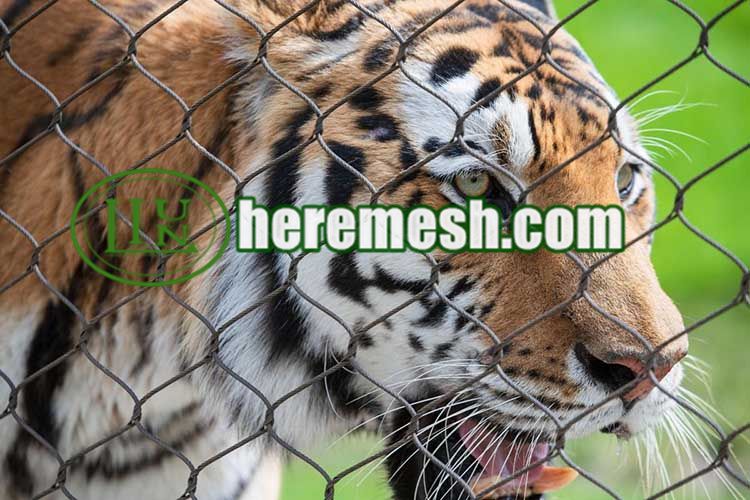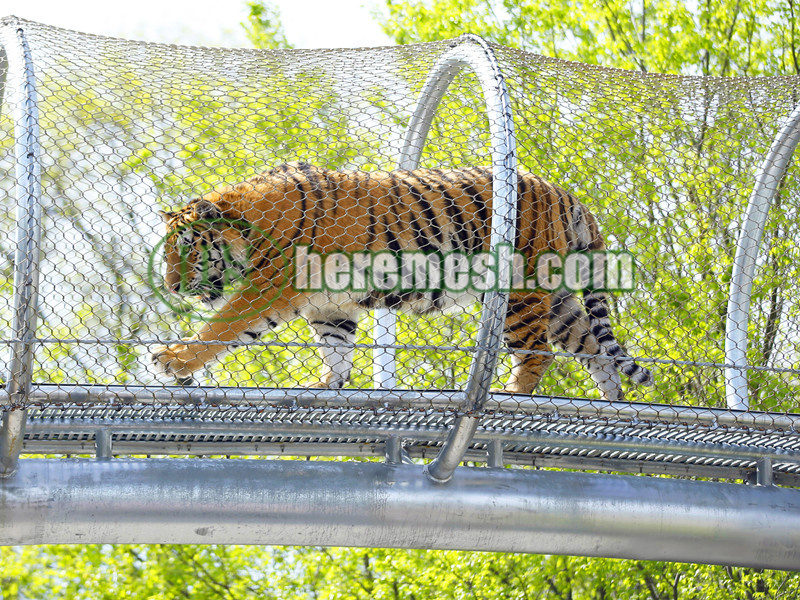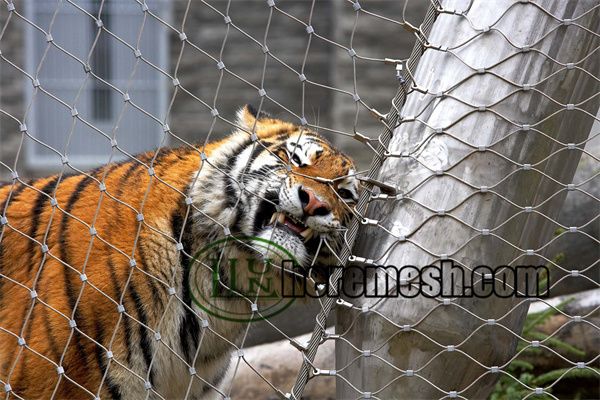Some guidelines–Creating safe tiger habitats with mesh
Creating safe tiger habitats with mesh is critical to their physical and mental well-being. Creating a safe and comfortable habitat for tigers meets their survival and developmental needs, while reducing exposure to the detrimental elements of the external environment. This all contributes to animal husbandry, research and conservation.
The importance of creating safe tiger habitats with mesh
1. Protecting tigers from predators. Tiger enclosure mesh can effectively prevent predators from entering the tiger’s habitat. Also it can provide a relatively safe environment to avoid the tiger being threatened by predators.
2. Preventing escape. For tigers, escape is a dangerous behavior. Tiger enclosure mesh can prevent tigers from accidentally escaping, protect them from external threats, and prevent them from negatively impacting the local ecosystem.
3. Providing a suitable living environment. Enclosure ensures that tigers are in a comfortable living environment and maximizes their physiological and behavioral needs, thus facilitating their breeding and reproduction. Animal protection mesh can provide a relatively safe breeding place and protect the cubs from the threat of predators.
4. Reducing disease transmission. In a controlled enclosure environment, contact between animals can be more easily controlled, reducing the risk of disease transmission. In addition, regular cleaning and maintenance of enclosure can also help reduce the spread of disease.

Creating safe tiger habitats with mesh, here are some guidelines on how to make the right choice of tiger enclosure mesh.
Choosing the right tiger enclosure requires a combination of protection, durability, and installation methods. It is best to choose the most appropriate enclosure mesh for the specific needs and geography of your animal enclosure project.
1. Mesh specification. The aperture and rope diameter should be chosen according to the size of the animal as well as the aggressiveness of the animal. In general, the aperture should be smaller than the body size of the animals. You have to ensure that they cannot squeeze through or get stuck. More aggressive animals should have a thicker rope diameter mesh. For large cats, a 3.2 mm rope diameter mesh is feasible.
2. Material durability. It is very important to choose durable materials to ensure that the enclosure mesh can withstand various climatic conditions and the test of time. A common material is stainless steel wire rope mesh. The chosen stainless steel material is not susceptible to rust or corrosion and can be used for a long period of time. For coastal as well as humid areas, please choose 316 stainless steel to show the good characteristics of stainless steel tiger enclosure. With good flexibility and strength, it will not be damaged in face of violent attacks from animals.
3. Installation. When considering the installation method of the tiger enclosure mesh, the mesh should be firmly installed on the structure of the enclosure to prevent the tiger from tearing or pushing down the mesh. Please make sure that it is installed with smooth edges so that it will not cause harm to the tiger’s body.
4. Ventilation and light. Enclosure needs good ventilation and light conditions to keep the animals healthy and comfortable. Choosing stainless steel enclosure mesh with good ventilation can ensure that the mesh will not block the air flow.
5. Cleaning and maintenance. Consider the ease of cleaning and maintenance. Choose stainless steel materials and designs that are easy to clean so that the enclosure can be cleaned regularly to prevent the growth of bacteria and mold.

Adding natural materials in the tiger enclosure
Adding natural materials in the enclosure is a great idea to restore wild and safe habitats. Creating a more wild environment within the enclosure mesh helps to restore the animal’s nature while keeping the tiger safe. Restoring a wild habitat within a tiger enclosure is a challenging task, but can be achieved by simulating aspects of the natural environment. The following are some of the possible methods:
1. Landscape design. When designing enclosure, consider the landscape design of the surrounding environment and try to mimic the natural environment in order to restore the real living environment. For example, adding tree branches or rocks, and some natural shelters. Plant some vegetation around or inside the enclosure that animals like, and build hills or caves of different heights. These vegetation can simulate the real jungle environment and provide shelter and habitat for the tigers.
2. Food and habitat platforms. Simulate the prey chain in the wild, provide feed that matches the tiger’s diet, and consider various ways for the tiger to engage in “hunting” behaviors, such as hiding food or allowing the tiger to chase moving feed. Provide clean water to mimic natural water sources in the wild. Provide platforms or shelves inside the enclosure where tigers can perch and rest.
3. Socialization environment. If there are multiple tigers, create an environment suitable for their socialization, including adequate space and resources, as well as providing opportunities for interaction. The exhibit can be divided into separate areas for different species exhibits, and each area can be connected by a stainless steel tunnel mesh to increase interaction between the different species. Provide a rich variety of environmental stimuli and toys to encourage tigers to engage in a variety of activities. Such as climbing, jumping and chasing to promote physical and cognitive well-being.
Conclusion
When creating safe tiger habitats with mesh, the key is to select the tiger enclosure correctly, understand the natural habits and environmental needs of tigers. Then you can try to mimic these conditions as much as possible. It can ensure that tigers can remain healthy and happy in their artificial environment.
Email: info@heremesh.com/sales@heremesh.com
Website:www.heremesh.com




